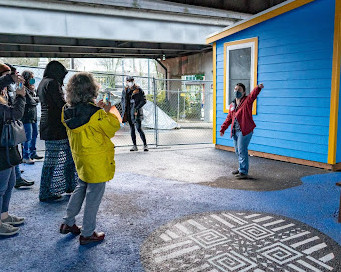American Psychological Association Public Information Statement in Response to the Shooting Death of Michael Brown
The shooting death by a police officer of 18-year-old Michael Brown, who was unarmed and African-American, is a national tragedy. While we do not know exactly what transpired between the police officer and Brown we do know that another promising young life has been lost. The American Psychological Association expresses its heartfelt condolences to the Brown family.
There is a growing body of psychological research that helps explain the difficult dynamics between police and members of minority groups in many communities.
Police officers are charged with protecting the communities in which they work. They have a challenging and often dangerous job. Among many critical issues that are part of the nationwide debate about police use of deadly force are the ways in which perceptions of threat are informed and shaped by race, and the impact of stereotypes on the lives and experiences of stereotyped groups. Psychologists have conducted extensive research addressing these systemic concerns.
For instance, research by psychologist Jennifer Eberhardt, PhD, has shown that stereotypes shape what we see. Specifically, her research studies have shown that stereotypical thinking or assumptions can impact whether we detect a threat when looking at an individual. Race perception can also play a role in whether we think we see a weapon in a person’s hand. Furthermore, stereotypes can also shape how an individual responds to a particular situation, for example, whether with fear, empathy or force. The question of whether assumptions based on stereotypes played a role in Brown’s death is unknowable at this point but the impact of such stereotypes in many aspects of American life is well documented.
Research conducted by psychologist Phillip Atiba Goff, PhD, found that black boys as young as 10 may not be viewed in the same light as their white peers. Instead they are more likely to be mistaken as older, perceived as guilty and face police violence if accused of a crime. Goff’s study also found that police are likelier to use force against black children if officers have “dehumanizing” attitudes about African-Americans.
It is important to note that training programs for police officers are in place in many communities to minimize the impact of stereotypes in law enforcement and the judicial system. A 2007 study published in APA’s Journal of Personality and Social Psychology® found that such training was effective in minimizing decision-making based on racial stereotypes. More such programs are needed across the country.
For more information about the impact of race — on community-police interactions and beyond — visit:
- Research by Jennifer Eberhardt, PhD, on how stereotypes shape perceptions.
- Research by Phillip Goff, PhD, on perception of guilt when black young men vs. white young men are accused of a crime.
- Research by Joshua Correll, PhD, on how police training and experience effects perceptions based on stereotypes.
- Commentary by Gwen Keita, PhD, APA executive director for Public Interest on the aftermath of the death of Trayvon Martin.
- APA Presidential Report — Dual Pathways to a Better America: Preventing Discrimination and Promoting Diversity.
Psychology is located in Biology-Psychology on the Undergraduate Campus.
MSC: 16
email psych@lclark.edu
voice 503-768-7511
Chair
Psychology
Lewis & Clark
615 S. Palatine Hill Road MSC 16
Portland OR 97219

